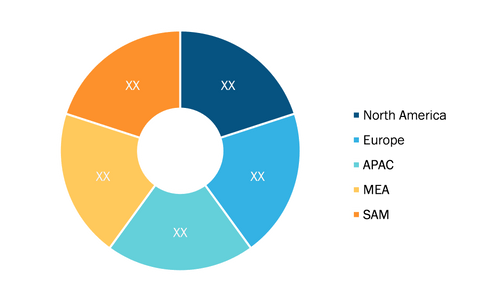According to our latest market study on “Aircraft Interface Device Market Forecast to 2028 – COVID-19 Impact and Global Analysis – by Platform, Connectivity, Fit Type, and Aircraft Type,” the market is projected to reach US$ 354.10 million by 2028 from US$ 174.06 million in 2021; it is expected to grow at a CAGR of 11.5% from 2022 to 2028.
The aviation industry is adopting advanced information technologies, which are anticipated to transform the decision-making capability of the industry and make the new implementations faster than before. The aircraft interface devices analysis through the Electronic Flight Bag (EFB) uses thousands of distinct software algorithms to process radar data and raw flight plans from the air traffic control (ATC) system. Owing to the benefits of the system, the aircraft OEMs are consistently emphasizing on installing advanced AIDs on their models. This is driving the aircraft interface device market size.
Aircraft modernization includes modern digital communication systems, new engines, inflight entertainment, advanced armaments, navigation flight systems, and data recorders. The transformation of aircraft is beneficial for the aircraft interface device (AID) manufacturers as the advanced AID is reliable and more accurate. Also, it has enhanced connectivity and communication and a high capacity to store data. These benefits of aircraft interface devices increase the scope of their adoption among the defense forces and commercial airliners to modernize the connectivity and communication system to have efficient aircraft functioning.
The global aviation sector is increasingly demanding lightweight and advanced avionics and associated components in the current market scenario. The lightweight aircraft and aircraft components benefit the airlines and military forces by reducing fuel consumption. This factor has increased the demand for lightweight AIDs. As wired AIDs are gaining prominence in the commercial & military aviation sector, various aircraft interface device market players are developing technologically robust AIDs.
Wireless AIDs are much lighter in weight than wired AIDs and omit the risks associated with loose interconnection and timely wiring maintenance. This factor attracts several commercial airlines to adopt the advanced AIDs and enhance their fleet operations, which poses a significant opportunity for the industry players operating in the aircraft interface device market. Moreover, installing these wireless AIDs is simpler than their wired counterparts, thereby increasing the interest in opting for the wireless AIDs among airlines and military forces. Thus, the growing trend of adopting and equipping aircraft with wireless AIDs poses a substantial growth opportunity for the aircraft interface device market during the forecast period. This influences the global aircraft interface manufacturers to develop new products as per the client's requirements. For instance, during the National Business Aviation Association Convention in Las Vegas, Nevada, in October 2021, Avionica, LLC—one of the world's leading providers of connected aircraft solutions for powering secure data and communications for the aviation industry, unveiled its latest product innovation, the miniAID. The miniAID is a service that delivers aircraft data to pilots in a fast and wireless manner, allowing them to optimize their operations. These factors will further contribute to the demand for wireless AIDs over the forecast period.
Impact of COVID-19 Pandemic on Aircraft Interface Device Market Growth
The aviation industry in Europe witnessed the immediate effects of the onset of the COVID-19 pandemic. With the outbreak in the region, the production and sales of aircraft components came to a sudden halt in most countries. The collapse of the demand side severely impacted the EU aerospace sector, thereby putting economies in deep crisis and bringing down international trade. The air transport sector plays an important role in economic growth and employment in many European countries. Supply chain disruptions and technological challenges strongly impacted this segment during the early months of the global crisis.
The aerospace industry in Europe began to witness airspace inefficiencies, activity delays, and insufficient flights with the initial spread of COVID-19 in the region in 2020. The commercial, military, and general aviation aircraft manufacturers present in the region faced an enormous challenge in 2020 due to the severe disruption in component supply, coupled with a decrease in demand for their models, thereby decelerating the growth of the aircraft interface device market in Europe. The aerospace industry in the EU is anticipated to recover gradually due to a slower economic recovery in countries and the burgeoning importance of international services. According to the IATA, the European aviation industry faced a net loss of ~US$ 26.9 billion in 2020.
The aircraft interface device market is segmented based on platform, connectivity, fit type, aircraft type, and geography. Based on platform, the aircraft interface device market is segmented into hardware and software. Based on connectivity, the aircraft interface device market is categorized into wired and wireless. By fit type, the market is bifurcated into line fit and retrofit. Based on aircraft type, the market is divided into fixed wing and rotary wing. Based on geography, the aircraft interface device market is primarily segregated into North America, Europe, Asia Pacific (APAC), the Middle East & Africa (MEA), and South & Central America. The key aircraft interface device market players include Boeing, Collins Aerospace., Honeywell International Inc., and Teledyne Controls LLC.
Aircraft Interface Device Market Share – by Region, 2021

Aircraft Interface Device Market Research Report 2021-2031
Download Free SampleAircraft Interface Device Market Size and Forecast (2021 - 2031), Global and Regional Share, Trend, and Growth Opportunity Analysis Report Coverage: By Platform (Hardware and Software), Connectivity (Wired and Wireless), Fit Type (Line Fit and Retrofit), and Aircraft Type (Fixed Wing and Rotary Wing), and Geography
Contact Us
Phone: +1-646-491-9876
Email Id: sales@theinsightpartners.com